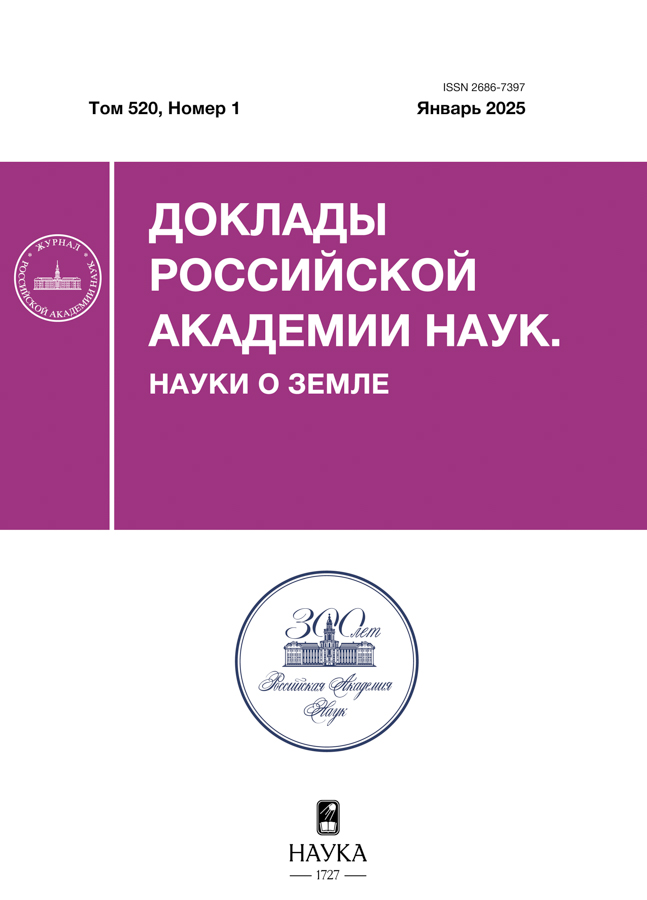Vertical gradient of the geomagnetic field by multiple altitude aeromagnetic survey
- 作者: Aleshin I.M.1,2, Soloviev A.A.1,2, Kholodkov K.I.1,2, Perederina F.V.1,2, Taran Y.V.1
-
隶属关系:
- Schmidt Institute of Physics of the Earth of the Russian Academy of Sciences
- Geophysical Center of the Russian Academy of Sciences
- 期: 卷 520, 编号 1 (2025)
- 页面: 124-128
- 栏目: GEOPHYSICS
- ##submission.dateSubmitted##: 03.06.2025
- ##submission.datePublished##: 30.05.2025
- URL: https://edgccjournal.org/2686-7397/article/view/682413
- DOI: https://doi.org/10.31857/S2686739725010136
- EDN: https://elibrary.ru/GWAJWY
- ID: 682413
如何引用文章
详细
Modern geophysical survey technologies are progressing fast. One notable milestone of this progress is substantial increase of georeferencing performance with benefits of advanced satellite radionavigation. This article delves into the advantages of employing multiple altitude (also referred to as multilevel) aeromagnetic measurements conducted using unmanned aerial vehicles for deriving vertical gradient. This approach contrasts with conventional methods that rely on the calculation of the corresponding transform of the anomalous magnetic field. A comparative analysis was conducted on two study areas, characterized by distinct magnetic anomalies. One region exhibited strong anthropogenic disturbances against a background of a relatively calm regional magnetic field, while the other demonstrated weaker anthropogenic anomalies. The comparison between the maps of the anomalous field gradient calculated directly and derived from multilevel survey in both regions underscores the potential benefits of straightforward gradient measurement methods.
全文:
作者简介
I. Aleshin
Schmidt Institute of Physics of the Earth of the Russian Academy of Sciences; Geophysical Center of the Russian Academy of Sciences
编辑信件的主要联系方式.
Email: ima@ifz.ru
俄罗斯联邦, Moscow; Moscow
A. Soloviev
Schmidt Institute of Physics of the Earth of the Russian Academy of Sciences; Geophysical Center of the Russian Academy of Sciences
Email: ima@ifz.ru
Corresponding Member of the RAS
俄罗斯联邦, Moscow; MoscowK. Kholodkov
Schmidt Institute of Physics of the Earth of the Russian Academy of Sciences; Geophysical Center of the Russian Academy of Sciences
Email: ima@ifz.ru
俄罗斯联邦, Moscow; Moscow
F. Perederina
Schmidt Institute of Physics of the Earth of the Russian Academy of Sciences; Geophysical Center of the Russian Academy of Sciences
Email: ima@ifz.ru
俄罗斯联邦, Moscow; Moscow
Ya. Taran
Schmidt Institute of Physics of the Earth of the Russian Academy of Sciences
Email: ima@ifz.ru
俄罗斯联邦, Moscow
参考
- Prasad K. N. D., Pham L. T., Singh A. P. A Novel Filter “ImpTAHG” for Edge Detection and a Case Study from Cambay Rift Basin, India // Pure Appl. Geophys. 2022. № 179. P. 2351–2364.
- Hood P. Gradient measurements in aeromagnetic surveying // Geophysics. 1965. № 30 (5). P. 891–902.
- Блох Ю. И. Обнаружение и разделение гравитационных и магнитных аномалий. М.: Издательство МГГА, 2009. 80 с.
- Соловьев А. А., Сидоров Р. В., Красноперов Р. И., Груднев А. А., Хохлов А. В. Новая геомагнитная обсерватория “Климовская” // Геомагнетизм и аэрономия. 2016. Т. 56. № 3. С. 365–379.
- Kulüke C., Virgil C., Stoll J., Hördt A. A new system to measure the gradient vector of the magnetic field on unmanned aerial vehicles — data processing and field experiment // RAS Techniques and Instruments. April, 2022. V. 1. Iss. 1. P. 65–80.
- Алёшин И. М., Соловьёв А. А., Алёшин М. И., Сидоров Р. В., Соловьёва Е. Н., Холодков К. И. Перспективы использования беспилотных летательных аппаратов в геомагнитных исследованиях // Наука и технологические разработки. 2019. Т. 98. № 3. С. 32–48. https://doi.org/10.21455/std2019.3-3
- Walter C., Braun A., Fotopoulos G. High-resolution unmanned aerial vehicle aeromagnetic surveys for mineral exploration targets // Geophysical Prospecting. 2020. № 68. P. 334–349.
- Чепиго Л. С. GravMagInv. Свидетельство о регистрации программы для ЭВМ RU 2022610137, 10.01.2022.
补充文件










